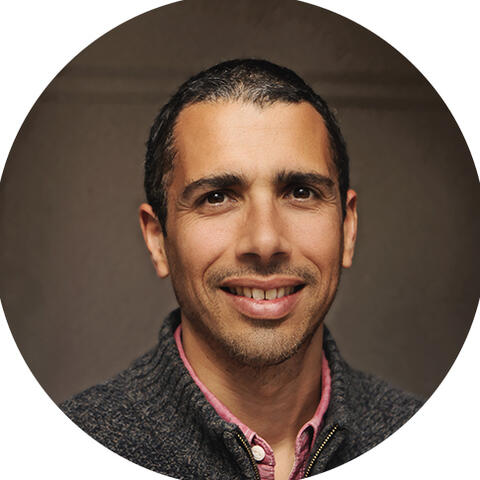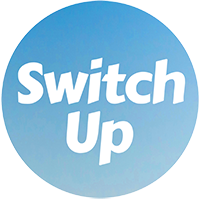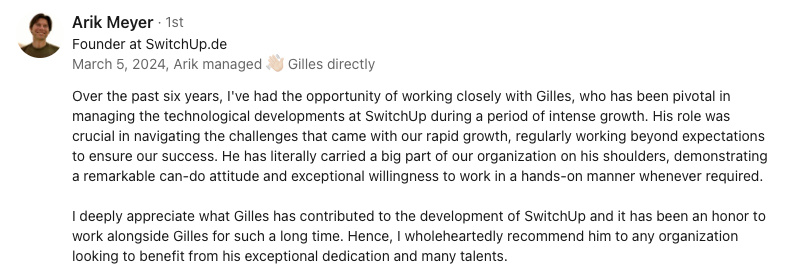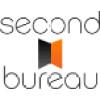Abstract:
The article argues that regularly letting go of outdated skills is an underrated but essential strategy for maintaining growth and adaptability in tech careers. It highlights how clinging to old tools and routines, despite the rapid evolution of technology, drains focus and stifles both personal and organizational progress—drawing on industry examples like Kodak and Microsoft to illustrate the consequences. Emotional attachments, such as the sunk cost fallacy and identity tied to expertise, make skill subtraction difficult, yet adopting a minimalist mindset—comparable to pruning a garden—frees up mental space and keeps professionals nimble. The piece offers practical methods like the "keep, sunset, archive" framework, regular skill reviews, and the use of digital tools or group rituals (like "skills funerals") to make this process manageable and even enjoyable. Personal stories from notable leaders such as Werner Vogels, Camille Fournier, and Charity Majors emphasize that moving away from hands-on technical work, while challenging, often leads to greater influence and satisfaction. The article encourages reframing the loss of skills as an opportunity for growth, communicating these changes positively, and making skill decluttering a habitual, celebrated part of career maintenance—ultimately suggesting that letting go is not about erasing the past, but about ensuring readiness for the future.
I've always found it surprisingly hard to let go—of old skills, familiar routines, even entire careers. The first time I truly felt this was in Berlin, when I stepped down as CTO of a startup I'd helped build from scratch. I remember sitting in my tiny kitchen, staring at a list of frameworks I’d mastered, wondering if I’d ever use them again. The urge to hold on was strong, but deep down, I knew clinging to every tool and title was quietly draining my focus and energy. Letting go, I’ve learned, isn’t just about loss—it’s about making space for something new.
If you work in tech, you probably know this feeling. New tools appear every month, but old habits and skills linger much longer. It’s tempting to keep every trick in your toolbox, convinced it’s the safest bet. But over the years—across Paris, Beijing, Berlin, and now Lisbon—I’ve seen how this habit can quietly stall your growth, sap your energy, and sometimes even threaten your career. Letting go rarely gets applause, but it’s the secret to staying nimble and ready for whatever comes next.
Here, I’ll share what I’ve learned about the cost of holding on, why it’s so tough to let go, and how a simple skill-scan can help you keep your career light and futureproof. I’ll mix in stories from my own journey—sometimes messy, sometimes funny, always honest. Whether you’re just starting out or feeling weighed down by a cluttered skillset, I hope these ideas help you clear space, refocus, and maybe even breathe a little easier.
Why letting go is a hidden superpower in tech
The invisible cost of holding on
I’ve seen it firsthand: a developer in Beijing, still fluent in Perl and Flash, struggling to keep up as our team shifted to Python and React. It felt safer to keep every old skill sharp, but in reality, it was exhausting. Every hour spent maintaining fading expertise was an hour not spent learning what mattered now. Over time, this approach can quietly erode your reputation, especially as others move forward.
Companies feel this too. When teams cling to outdated tools, projects slow down, innovation stalls, and costs pile up—think of the endless hours spent keeping legacy systems alive. Kodak’s film experts missed the digital wave, and even Microsoft’s legendary Windows developers had to reinvent themselves for the cloud. The lesson is simple: holding on too tightly can leave you behind.
I’ve made this mistake myself. After moving from Berlin to Lisbon, I realized I was still listing a dozen old frameworks on my CV—some I hadn’t touched in years. It was like carrying a heavy backpack for no reason. Letting go was uncomfortable, but it freed up space for new challenges.
Emotional barriers to letting go
Letting go of a skill isn’t just practical—it’s deeply personal. I remember the anxiety I felt leaving my CTO role in Berlin. My identity was tied to being the technical lead, the one who knew every line of code. The sunk cost fallacy hit hard: after years of investment, how could I just walk away? But I also craved more autonomy, a chance to shape my own path.
In tech, expertise often feels like your badge of honor. Dropping a skill can trigger fears of becoming irrelevant or losing respect. Old routines are comforting, even when they no longer serve you. I’ve felt this tension every time I’ve switched cities or careers—from running a science popularization company in Beijing to consulting in Lisbon. The fear of the unknown is real, but I’ve learned that letting go isn’t weakness—it’s a quiet kind of strength.
Minimalist mindset for letting go
Minimalism in tech isn’t about doing less for its own sake. It’s more like pruning a garden—cutting back what no longer grows so the healthy parts can thrive. I picked up this habit from my grandfather, who taught me to trim apple trees in the French countryside. In my career, I’ve tried to do the same: regularly subtracting outdated skills to make room for learning and flexibility.
If you make subtraction a habit, you won’t be slowed down by the past. In a field that changes as quickly as tech, this steady routine is a real advantage. But how do you know what to drop, and when?
Minimalist frameworks for retiring outdated skills
Spotting when a skill is past its prime
Over the years, I’ve learned to watch for signals that a skill is fading. Industry news and job boards are a good start, but I also pay attention to quieter clues:
- Fewer job postings mentioning the skill on LinkedIn or Indeed
- Official end-of-life notices from vendors (I still remember the day Adobe announced Flash was done—felt like the end of an era)
- Less activity or fewer questions on Stack Overflow or GitHub
- Silence in online groups that used to buzz with tips and tricks
Sometimes, a quick chat with a friend or a passing comment in a Slack channel is the best warning. Community buzz matters as much as data. In Berlin, I once noticed our team stopped joking about a certain framework—sure enough, it was on its way out.
Broader industry reports help too. I make it a habit to check forecasts every few months, so I’m not caught off guard. Staying in touch with trends makes adapting less painful.
The skill-scan method for annual self-assessment
Here’s the framework I wish I’d had earlier—a simple, data-driven skill-scan I now use every year (and sometimes more often, especially after big moves like from Beijing to Lisbon). It’s a bit like clearing out a cluttered drawer in my Lisbon apartment: sometimes you find treasures, sometimes just dust.
Skill-scan checklist:
1. List all your current skills—technical, soft, even the odd ones (I still include my Mandarin, though I use it less these days).
2. Gather data—check job boards, industry reports, and your own project history. Which skills are in demand? Which are fading?
3. Sort each skill into three buckets:
- Keep: Skills you use often and that are still valuable in your field.
- Sunset: Skills you’re phasing out—maybe you use them less, or they’re losing relevance.
- Archive: Skills you rarely touch, but might need for a rare project or as a foundation for learning something new.
4. Reflect on your goals—what do you want to learn next? Which skills align with where you want to go?
5. Decide on action steps—double down on your “keep” skills, schedule time to learn something new, and let the “sunset” skills fade out of your daily routine.
I used this method as CTO for a cross-border e-commerce platform in Berlin. We tracked team skills in a shared Notion board, updating it every quarter. It wasn’t perfect—sometimes we argued about what to keep—but it kept us honest and focused.
Rituals and tools for routine skill review
Making skill reviews a habit is key. I like to pair them with other routines—end-of-year reflections, or even the first sunny weekend of spring (old gardening habits die hard). Here’s what works for me:
- Twice a year, I jot down my skills and recent projects in Notion.
- I check what’s in demand, what’s fading, and sort each skill using the skill-scan buckets.
- I set a reminder in Todoist to revisit this list—otherwise, I’ll forget, especially when life gets busy.
- Sometimes, I’ll even make a little ceremony out of it—pour a glass of wine, play some old French jazz, and say goodbye to a skill that’s served me well.
When I led a multicultural team in Beijing, we created a shared skills inventory. Every six months, we’d review it together, sometimes poking fun at the “ancient” tools we’d finally retired. It made the process lighter, almost fun.
Stories of growth through letting go
Letting go opens new doors
One of the biggest pivots in my career was co-founding a science popularization company in China. I started as the “physics guy,” running workshops and writing content. But as the company grew, I had to let go of hands-on teaching and learn digital marketing—a skill I’d never planned to pick up. It was awkward at first, but it opened doors I hadn’t imagined. Later, when I moved to Lisbon, those marketing skills helped me land consulting gigs I’d never have qualified for as just a physicist.
I see this pattern everywhere. Werner Vogels moved from daily coding to supporting teams at Amazon. Kelsey Hightower and Camille Fournier shifted from pure tech work to mentoring and leadership. Even Charity Majors has written about the pain and relief of leaving systems work behind to build a company. The common thread? Letting go stings, but it’s often the start of real growth.
The cost of holding on too long
I’ve also felt the emotional toll of resisting change. After leaving Berlin, I spent months clinging to my old CTO identity, even as I struggled to find my footing in Lisbon’s freelance scene. It was lonely, and my confidence took a hit. I see this in others too—developers who refuse to update their skills, only to watch salaries stagnate and opportunities slip away.
History is full of warnings. Kodak’s film experts were left behind as digital took over. Microsoft’s old-school developers had to scramble when the company shifted to cloud. The lesson is clear: tech rewards those who adapt, not those who cling to the past.
Reframing loss as growth in your tech journey
Turning skill loss into progress
A growth mindset helps, but it’s not always easy. When I let go of my CTO role, I worried about income, stability, even my mental health. There were months when I missed the steady paycheck and the comfort of a clear job title. But over time, I learned to see each loss as an opening—space to learn, to rest, to try something new.
If you can frame letting go as progress, not failure, it gets easier. I like to think of it as trading in my first bike for a faster one—scary at first, but soon you’re flying. When I explain these moves to clients or colleagues, I link my old skills to what I’m doing now. For example, my background in physics shapes how I approach data problems, even if I’m not teaching anymore.
Communicating your evolving focus
It’s not just about what you let go, but how you talk about it. I try to present each shift as a conscious choice—proof that I’m thinking ahead, not just drifting. When I update my LinkedIn or CV, I highlight how past skills inform my current work. For instance, my experience running a team in Beijing taught me to navigate cultural differences—something that’s invaluable in remote consulting.
A simple trick: set a reminder (maybe every spring, when you’re pruning your garden or cleaning your apartment) to refresh your career materials. It keeps your story current and shows you’re moving with purpose.
Making minimalist maintenance part of your routine
Simple systems for ongoing skill pruning
Pairing skill reviews with other habits makes them stick. I set a quarterly reminder in Todoist, usually tied to invoicing or project wrap-ups. Sometimes, I use a quick checklist—nothing fancy, just a few lines in Notion or even on paper. The key is to keep it light and regular, not a big, scary event.
When I was CTO, we linked skill reviews to our annual team retreat. Everyone brought their “keep, sunset, archive” lists, and we’d compare notes over coffee. It wasn’t always easy—sometimes egos got bruised—but it helped us stay sharp.
Sharing and celebrating what you’ve let go
One of my favorite rituals was a “skills funeral” we held in Berlin. At the end of the year, each team member shared a skill they were retiring—sometimes with a joke, sometimes with a sigh of relief. We’d toast to the old tools, then talk about what we wanted to learn next. It made change feel less like loss and more like progress.
Even now, when I catch up with old colleagues, we’ll laugh about the frameworks we’ve buried. Sharing what you’ve let go can bring closure—and spark conversations about what really matters.
Letting go of old skills isn’t easy. Sometimes it feels like tossing out a favorite old shirt, or pruning a branch that once bore fruit. But I’ve learned—across four countries, a handful of careers, and more than a few mistakes—that it’s the hidden edge in tech. By checking and lightening your skillset regularly, you make room for what matters: learning, growing, maybe even having a bit more fun at work. The skill-scan method and these small rituals make clearing out old habits practical—and sometimes even joyful. Leaving skills behind doesn’t erase your past. It’s how you open new doors and stay ready for whatever comes next. Growth, I think, always starts with letting something go—even if it’s just a little thing.














